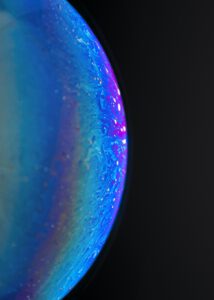
Dissonance Effect | People believe what they want to believe
Dissonance Effect | People believe what they want to believe „People believe, what they want
Real-world events in which experiences are created that last our whole lives consist of a network of information and sensory impulses.
Those networks are a mixture of sensory information that we experienced in bespoken situations. Most of this information is memorised in the subconscious and therefore not explicit. Powerful memories from your past can be reactivated if we experience or sense something, that matches the sensory information, which is part of the network of that past memory. If that happens, all other connected information such as emotions or feelings but also rational memories get rewound.
Using this can help you to link your product to a happy memory and therefore with powerful emotions, which otherwise would have to be created by your brand itself. This would take a longer period of time and would cost way more.
The sense of smell connects to associations and emotions. The Olfactory bulb links directly to the hippocampus and amygdala. The Olfactory bulb is responsible for processing scents. The hippocampus and the amygdala are responsible for the emotions in our bodies. Therefore the sense of smell connects to the emotional system in our brain.
Through the clever use of fragrances, a brand can evoke positive emotions by letting the customer relive positive experiences from the past. Those experiences can either be borrowed from a past event or they can be past encounters with the brand directly. The brand can host an event designed to create immersive and emotional experiences which link it to the fragrances used at the event location.
The sense of sight is the sense that lets us create images in our heads. Research has shown that the colour of light has a significant influence on us. During dark winter days, it feels harder to motivate oneself than during bright and warm summer days. The influence of the temperature is significant but not discussed right now.
A large amount of research was conducted on the impact of light and colours on cognitive tasks and mood. The colour red has an alarming and high-level compliance effect on us. As the study suggests, detail-oriented visual tasks can be enhanced using red colour ( Mehta & Zhu 2009; Elliot et al. 207; Braun & Silver 1995). The colour blue increases creativity and innovation (Mehta & Zhu 2009). This could show that the spectral composition of ambient lighting can influence the processing of emotional stimuli (Vandewalle et al. (2010)). So that the colours blue and green not only increase responses to emotional stimulation in cortex regions for memory processing but also enhance functional coupling with areas such as the amygdala that are important for emotional regulation.
Besides research, it is commonly known that certain colours are associated with certain characteristics. Those characteristics depend on cultural embedding. This means that we have repeatedly encountered specific colours in a specific context. This lets us conclude, that characteristics and associations with colour highly depend on the culture and personal experience. This basis can change over time.
whereas the research-driven factors are based on the biological condition of humans will stay the same in the future.
Regardless of culture, there are certain effects that music has on people. As the study of Schere and Oshinsky (1977) showed, people have nearly the same associations regarding tempo, pitch level and amplitude modulation of music. Slow music is associated with sadness, boredom or disgust whereas fast pas music is considered happy, surprising, pleasant, potent or active. In contrast, it also bears the associations of fear and anger. The pitch level has almost the same effect, low-pitched music is mostly connected to negative aspects and high-pitched music is mostly positive. As the case with the tempo, also anger and fear can be associated with high-pitched music. The amplitude modulation of a song can be small or large. Small amplitude modulation is linked to merely negative emotions and feelings and large amplitude modulation is associated with happiness, pleasantness, activity or surprise.
This of course varies according to culture, generation and target group. But the basic associations stay more or less the same.
The world is growing more complicated daily. When things get more complex, people feel to loos control over it.
A sense of control rises by controlling what lies in one’s control. The products we buy or how we design our homes.
The sense of touch can give customers a higher sense of control before purchasing a product. Designing a product that appeals aesthetically, selecting the surface to create a certain feel, and much more, are important aspects to keep in mind when creating a product. To enable customers to experience the product, retailers need to rethink store design. The new retail store is about experiencing the product in use rather than reading the description on the back of its packaging.
Eating something that reminds you of the favourite dish your mother used to make. This can evoke strong and positive emotions. Customers feel more valued if they are offered a free beverage or a small snack when entering a store. Customers will spend more time in a store when having a glass of wine, or a delicious sandwich. This not only elevates their mood and makes the in-store experience greater, but also leads them to buy more.
Not considering the human senses when designing CX offline and online is a major miss of a growth opportunity. Therefore considering all these, different factors, implementing them into the brand strategy is very important. For some aspects, it is more important than for others to stay within the defined brand persona. When aspects are implemented that work against the brand’s persona, the positive effect could be harmed. If done wrong it also could harm the brand’s reputation.

Dissonance Effect | People believe what they want to believe „People believe, what they want

Social Media Audio um Reels zu boosten Auf der Social Media Platform Instagram gibt es zwei Arten

Immersive CX by speaking to the senses When customers have a positive experience with a